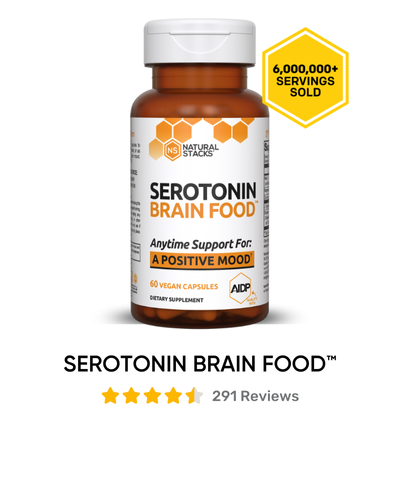How CILTEP Creator Abelard Lindsay Uses Nootropics To Increase Memory


There are several mechanisms of memory and learning in the brain.
One type is called Early Long-Term Potentiation (E-LTP), which creates memories that last up to 3 hours.
Another is called Late Long-Term Potentiation (L-LTP), which creates memories that can last up to a lifetime [1].
The relationship between them, that being the biochemistry of how short-term memories relate to long-term memories, involves the highly complex MAPK/ERK pathway.
In this article I will delve into this linkage between the two and examine some techniques for possibly enhancing the development of long-term memories by improving signaling along the MAPK/ERK pathway.
E-LTP is a process reliant on the NMDA and AMPA receptor present in the synaptic cleft. These receptors respond to ion fluxes generated by electrical currents that move across synapses.
When the NMDA receptor is activated via a specific electrical pattern that arrives from an adjacent neuron called a tetanus, calcium ions enter the cell and stimulate CAMKII. CAMKII triggers processes that make AMPA receptors more active and recruits more AMPA receptors to the synaptic cleft which strengthens E-LTP and forms short-term memories.
Studies suggest that these processes can be improved and made more efficient through various amapkine drugs such as Aniracetam [2][3]. Repeated tetanuses at the synaptic cleft create L-LTP via extracellular-signal-regulated kinases (ERK). ERK integrates many signals.
The main upstream signals to ERK are generated by the RAS family of proteins. The calcium influx from activation of NMDA receptors at the synaptic cleft by the repeated tetanuses activate Ras-GRF1 and Ras-GRF2 which stimulates RAS and subsequently ERK [4].
If ERK’s activity is blocked, long-term memory is inhibited [5]. RAS can also be activated by Brain Derived Neurotrophic Factor (BDNF) at the TRKB receptor [6]. In L-LTP the RAS/ERK pathway combines with the cAMP/PKA pathway to activate CREB which then causes transcription activity in the neuronal nucleus.
This process creates a more permanent strengthening of neuronal networks [7]. cAMP is degraded by the PDE4 enzyme which, if inhibited, increases the duration of CREB’s activity by prolonging cAMP’s activation of CREB via PKA [8].
Increasing cAMP and inhibiting PDE4 is how I theorize CILTEP improves L-LTP [9].
In reading over the literature about the large amount of interactions involved in ERK and RAS pathways, it becomes apparent that short-term memory is a more self-contained system centered around activities at the synaptic cleft while the process by which tetanuses generate long-term memory requires the integration of a large number of intracellular signals.
This would intuitively make sense as much less of what is remembered for a short period of time makes it to long-term memory. One aspect that cements long-term memories is anxiety generated in the amygdala.
As is well known, memories of stressful events are likely to be highly memorable. This is the so called “flash bulb” memory effect [10]. The amygdala is the main fear processing center of the brain and can prime long-term potentiation via BDNF that stimulates the RAS/ERK pathway via the TRK B receptor [11][12][13].
Another aspect that cements long-term memories is intercellular dopamine which acts at the D1 and D5 receptor to generate cAMP which stimulates CREB [14] and stimulates RAS/ERK through RAS-GRF1 [15].
Dopamine release is triggered by novelty detection in the brain so that would imply that more novel experiences are also more likely to be remembered [16]. It’s interesting that at a younger age there is more capacity for learning but also stronger emotions and stronger sensitivity to novelty.
Perhaps this is because the BDNF and dopamine linked learning systems are more highly activated at a younger age [17], especially during the “critical period” [18] when language acquisition is theorized to be much easier. Some herbal supplements have shown the ability to upregulate the production of BDNF.
One example is Gastrodin [19]. This herb, used in traditional chinese medicine, is well known for its anti-anxiety effects. In a study Gastrodin was able to significantly increase BDNF levels and ERK activation vs controls after 72 hours. Studies have suggested that stimulation of the TRKb receptor by cAMP may also potentiate BDNF.
This could possibly indicate a synergy between aspects of the cAMP raising effects of forskolin and BDNF activity at the TRKb receptor [20]. Fisetin, a component of strawberries, was also show in studies to increase L-LTP required ERK activity [21]. In tests in animal models 10mg/kg and 25mg/kg dosages showed considerable beneficial effect on long-term memory object recognition ability in mice.
Ginsengosides from Ginseng also showed activation of the MAPK/ERK pathway [22]. Baicalin [23], which is derived from the chinese herb Scutellaria galericulata, was shown to regulate and maintain the effects of BDNF and CREB under the influence of the exogenous stress hormone corticosterone in an animal model.
In developing a memory stack that will complement CILTEP I tend to look for ways that I can address each system in the brain with the proper supplements in order to provide maximum effectiveness.
Addressing the RAS and ERK systems of the brain, possibly through the above suggested mechanisms, is a logical next step in further developing and advancing my personal nootropic regimen.
Additional posts by Abelard Lindsay (@ciltep):
- The Nootropic Why
- Acetyl-L-Carnitine Exploring Its Cognitive and LTP Related Effects
- Magnesium L-Threonate Can Improve Brain Function and LTP
- CILTEP and Racetams: Evidence for a theory of complementary mechanisms of action
- Some Health Benefits of Resveratrol Could Theoretically Apply to CILTEP
- Assembling the Acetylcholine Puzzle Part 1
- Huang YY, Kandel ER. Recruitment of long-lasting and protein kinase A-dependent long-term potentiation in the CA1 region of hippocampus requires repeated tetanization. Learn Mem. 1994;1(1):74-82. PMID 10467587
- Lynch MA. Long-term potentiation and memory. Physiol Rev. 2004;84(1):87-136. PMID 14715912
- Arai AC, Kessler M. Pharmacology of ampakine modulators: from AMPA receptors to synapses and behavior. Curr Drug Targets. 2007;8(5):583-602. PMID 17504103
- Feig LA. Regulation of Neuronal Function by Ras-GRF Exchange Factors. Genes Cancer. 2011;2(3):306-19. PMID 21779501
- Davis S, Vanhoutte P, Pages C, Caboche J, Laroche S. The MAPK/ERK cascade targets both Elk-1 and cAMP response element-binding protein to control long-term potentiation-dependent gene expression in the dentate gyrus in vivo. J Neurosci. 2000;20(12):4563-72. PMID 10844026
- Mulholland PJ, Luong NT, Woodward JJ, Chandler LJ. Brain-derived neurotrophic factor activation of extracellular signal-regulated kinase is autonomous from the dominant extrasynaptic NMDA receptor extracellular signal-regulated kinase shutoff pathway. Neuroscience. 2008;151(2):419-27. PMID 18055129
- Miyamoto E. Molecular mechanism of neuronal plasticity: induction and maintenance of long-term potentiation in the hippocampus. J Pharmacol Sci. 2006;100(5):433-42. PMID 16799259
- Mackenzie SJ, Houslay MD. Action of rolipram on specific PDE4 cAMP phosphodiesterase isoforms and on the phosphorylation of cAMP-response-element-binding protein (CREB) and p38 mitogen-activated protein (MAP) kinase in U937 monocytic cells. Biochem J. 2000;347(Pt 2):571-8. PMID 10749688
- https://www.upgradedself.com/files/ciltep-white-paper.pdf
- http://en.wikipedia.org/wiki/Flashbulb_memory
- Patterson SL, Pittenger C, Morozov A, et al. Some forms of cAMP-mediated long-lasting potentiation are associated with release of BDNF and nuclear translocation of phospho-MAP kinase. Neuron. 2001;32(1):123-40. PMID 11604144
- Heldt SA, Zimmermann K, Parker K, Gaval M, Weinshenker D, Ressler KJ. BDNF deletion or TrkB impairment in amygdala inhibits both appetitive and aversive learning. J Neurosci. 2014;34(7):2444-50. PMID 24523535
- Mcgaugh JL. The amygdala modulates the consolidation of memories of emotionally arousing experiences. Annu Rev Neurosci. 2004;27:1-28. PMID 15217324
- Otmakhova NA, Lisman JE. D1/D5 dopamine receptor activation increases the magnitude of early long-term potentiation at CA1 hippocampal synapses. J Neurosci. 1996;16(23):7478-86. PMID 8922403
- Fasano S, D'antoni A, Orban PC, et al. Ras-guanine nucleotide-releasing factor 1 (Ras-GRF1) controls activation of extracellular signal-regulated kinase (ERK) signaling in the striatum and long-term behavioral responses to cocaine. Biol Psychiatry. 2009;66(8):758-68. PMID 19446794
- Roggenhofer E, Fidzinski P, Bartsch J, Kurz F, Shor O, Behr J. Activation of dopamine D1/D5 receptors facilitates the induction of presynaptic long-term potentiation at hippocampal output synapses. Eur J Neurosci. 2010;32(4):598-605. PMID 20646048
- Aasebø IE, Blankvoort S, Tashiro A. Critical maturational period of new neurons in adult dentate gyrus for their involvement in memory formation. Eur J Neurosci. 2011;33(6):1094-100.21395853
- http://en.wikipedia.org/wiki/Critical_period
- Zhang R, Peng Z, Wang H, et al. Gastrodin ameliorates depressive-like behaviors and up-regulates the expression of BDNF in the hippocampus and hippocampal-derived astrocyte of rats. Neurochem Res. 2014;39(1):172-9. PMID 24293261
- Patterson SL, Pittenger C, Morozov A, et al. Some forms of cAMP-mediated long-lasting potentiation are associated with release of BDNF and nuclear translocation of phospho-MAP kinase. Neuron. 2001;32(1):123-40. PMID 11604144
- Maher P, Akaishi T, Abe K. Flavonoid fisetin promotes ERK-dependent long-term potentiation and enhances memory. Proc Natl Acad Sci USA. 2006;103(44):16568-73. PMID 17050681
- Hu JF, Xue W, Ning N, Yuan YH, Zhang JT, Chen NH. Ginsenoside Rg1 activated CaMKIIalpha mediated extracellular signal-regulated kinase/mitogen activated protein kinase signaling pathway. Acta Pharmacol Sin. 2008;29(9):1119-26. PMID 18718181
- Lee B, Sur B, Shim I, Lee H, Hahm DH. Baicalin improves chronic corticosterone-induced learning and memory deficits via the enhancement of impaired hippocampal brain-derived neurotrophic factor and cAMP response element-binding protein expression in the rat. J Nat Med. 2014;68(1):132-43. PMID 23749289










